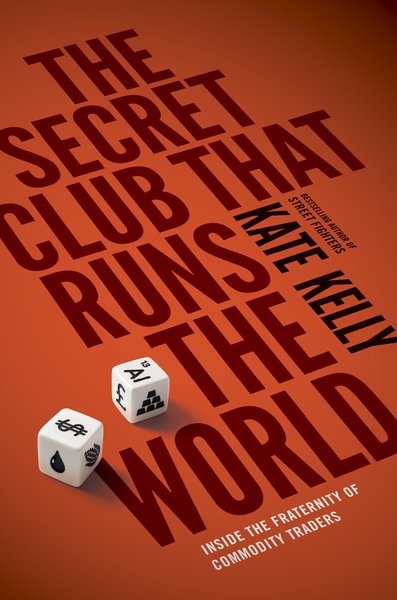On Berkshire Hathaway and Asbestos
Recently, a friend of mine from Canada came to stay with me. ?We talked about a wide number of things, but when we talked about investing, I described insurance investing to him, giving my usual explanation on reserving.
Classical life insurance reserves are a science. ?Death happens with regularity, it is only a question of when. ?Short-tail P&C, health, etc, are almost a science — the claims come quickly, and the reserves get adjusted rapidly. ?Long-tail Casualty and Liability?is a dark art at best. ?Mortgage, financial, and title insurance reserving is?not even an art; there is no good theory behind them, as is true of life insurance products with secondary guarantees, particularly those dealing with variable products.
As an example of long-tail P&C, I told my friend about Berkshire Hathaway and asbestos — I mentioned to him how BRK has become the reinsurer of choice for insurers with uncertain asbestos liabilities. ?Buffett has reinsured White Mountains, AIG, CNA, Equitas. and many others, the most recent being Liberty Mutual, which happened after the talk with my friend.
This is retroactive reinsurance, where an insurer purchases insurance from a reinsurer to cover business previously written. ?This is an uncommon form of insurance, and most commonly used when the amount of claims is very uncertain.
Quoting from the Bloomberg article:
Liberty Mutual Group Inc. issued $750 million of bonds to help finance a payment to a unit of?Warren Buffett?s?Berkshire Hathaway Inc. (BRK/B)?for covering the insurance company?s liabilities tied to asbestos.
The 4.85 percent, 30-year notes were sold to yield 160 basis points more than similar-maturity Treasuries, according to data compiled by Bloomberg.?Standard & Poor?s?increased Liberty Mutual?s rating one level to BBB from BBB- after Berkshire?s National Indemnity Co. agreed last week to provide as much as $6.5 billion of coverage for the insurance company?s liabilities for asbestos, environmental and workers? compensation policies.
?This agreement covers Liberty Mutual?s potentially volatile U.S. A&E liabilities and largely mitigates potential risks from future adverse reserve developments,? Tracy Dolin, an S&P analyst, said in a statement.
Berkshire, which has grown over the last five decades by investing insurance premiums in stocks and takeovers, has assumed billions of dollars in asbestos risk from insurers including American International Group Inc. and CNA Financial Corp.
Liberty Mutual paid Omaha, Nebraska-based National Indemnity about $3 billion for the coverage, according to a July 17 company statement.
This is similar to the other deals, where the premium paid is roughly half the amount of what BRK could have ot pay out at maximum. ?Note that BRK has capped its exposure to the claims.? ?If asbestos claims against Liberty Mutual exceed $6.5 Billion, Liberty Mutual will have to pay the excess.
I don’t think there is another American insurance company with more asbestos exposure than BRK. ?That’s not necessarily a bad thing, though. ?Let me quote from BRK’s recent 10-K:
We are exposed to environmental, asbestos and other latent injury claims arising from insurance and reinsurance contracts. Liability estimates for environmental and asbestos exposures include case basis reserves and also reflect reserves for legal and other loss adjustment expenses and IBNR [DM: Incurred But Not Reported] reserves. IBNR reserves are based upon our historic general liability exposure base and policy language, previous environmental loss experience and the assessment of current trends of environmental law, environmental cleanup costs, asbestos liability law and judgmental settlements of asbestos liabilities.
The liabilities for environmental, asbestos and other latent injury claims and claims expenses net of reinsurance recoverables were approximately $13.7?billion at December?31, 2013 and $14.0?billion at December?31, 2012. These liabilities included approximately $11.9?billion at December?31, 2013 and $12.4?billion at December?31, 2012 of liabilities assumed under retroactive reinsurance contracts. Liabilities arising from retroactive contracts with exposure to claims of this nature are generally subject to aggregate policy limits. Thus, our exposure to environmental and other latent injury claims under these contracts is, likewise, limited. We monitor evolving case law and its effect on environmental and other latent injury claims. Changing government regulations, newly identified toxins, newly reported claims, new theories of liability, new contract interpretations and other factors could result in significant increases in these liabilities. Such development could be material to our results of operations. We are unable to reliably estimate the amount of additional net loss or the range of net loss that is reasonably possible.
Long tail P&C reserves are roughly 20% of the total gross P&C reserves of BRK, and this deal with Liberty Mutual increases it. ?Again, that’s not a bad thing, necessarily. ?Given the premium paid, even if BRK pays out the maximum on average 10 years from now, the deal is a winner if BRK earns more than 8% per year. ?If 15 years 5.3%. ?If 20 years, 4%. ?Given the long period before the ultimate payment of claims, BRK can make money in most scenarios.
That said, if anything bad ever did happen to BRK,?such that its solvency was impaired, there would be a lot of insurance companies hurting as a result. ?BRK is critical to the payment of asbestos claims. ?There is not a better company to entrust with this task.
Full Disclosure: Long BRK/B for myself and clients — we own the equivalent of one “A” share.



